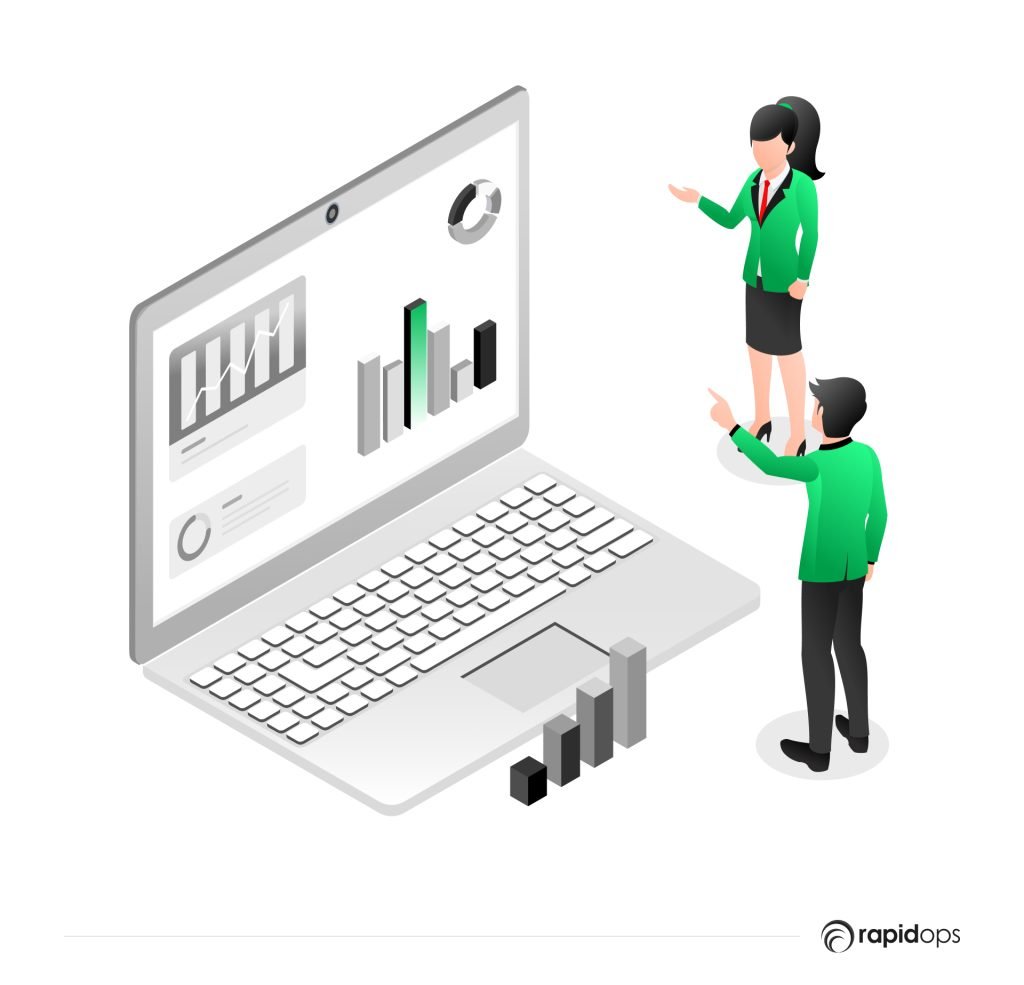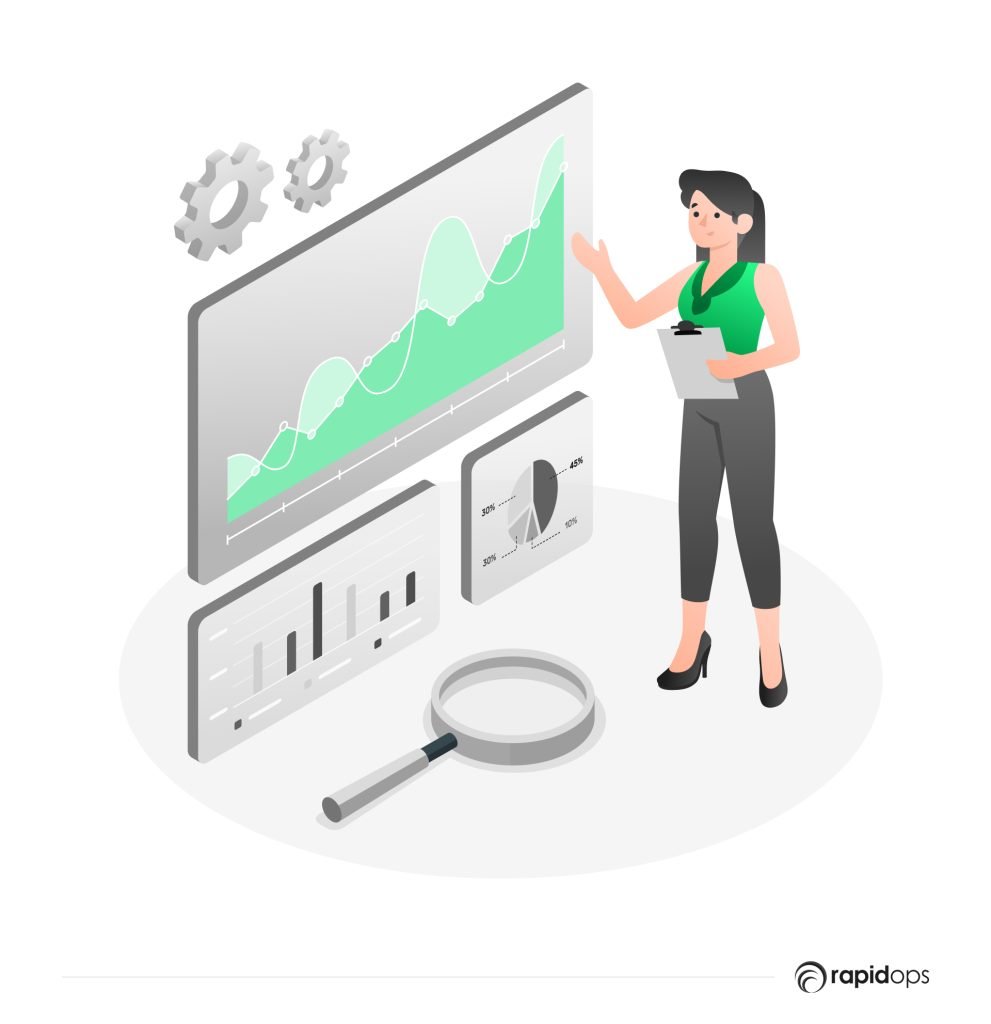In the current era of digitalization, data analytics has become an integral component of business operations. The abundance of data generated by various sources, such as social media, customer interactions, and transactional records, has compelled companies to incorporate data analytics into their decision-making processes.
By leveraging data analytics, businesses can extract valuable insights from their data to optimize operations, reduce costs, and gain a competitive advantage. However, despite its immense potential, data analytics also poses significant challenges that businesses must overcome.
This article explores the challenges and benefits of data analytics and provides insights into how businesses can tackle these challenges to harness their potential.
We will delve deeper into these challenges and explore how businesses can overcome them by implementing best practices such as data governance, cleaning, and privacy policies.
Challenges and solutions of data analytics in business
According to a survey published by FinancesOnline, here are the top reasons why organizations don’t opt to implement data analytics:
1. Data privacy and security concerns
Data privacy and security concerns pose significant challenges for organizations utilizing data analytics. With the implementation of data analytics, organizations are at risk of cyber-attacks, data breaches, and mishandling of data collection and usage.
Organizations must establish strong data security measures, such as data encryption, access controls, and regular security audits, to address these concerns.
Solutions
- Implement robust data security policies and procedures like encryption and access controls.
- Hire a dedicated data privacy officer OR a data analytics partner to oversee data management and conduct regular security audits.
- Provide training and awareness programs to employees to educate them about data privacy and security best practices.
2. Limited access to data

Another challenge to data analytics is limited access to data. Organizations sometimes need to access their data directly to make more informed decisions, which may be challenging if the organization has limited resources, data silos, or ownership issues.
Organizations can overcome this challenge by collaborating with partners and stakeholders to gain access to the necessary data.
Solution
- Use tools that enable data integration
- Collaborate with partners and stakeholders to access the data unavailable within the organization.
3. Lack of training
Data analytics requires specialized skill management and knowledge, and many organizations may need more expertise to analyze data effectively. To address this challenge, organizations can provide training programs and resources like Data Analytics courses to help employees acquire the necessary skills.
In addition, they can hire data analysts or work with third-party vendors to provide experts in analytics services.
Solution
- Provide training programs and resources to help employees develop the necessary skills.
- Work with third-party vendors /consulting firms, like Rapidops to provide analytics services.
4. Complex tools and interfaces
Data analytics solutions can be complex and challenging, especially for non-technical users. To make data analytics more accessible, organizations should invest in user-friendly tools and interfaces that make it easy for users to analyze and interpret data.
Solution
- Invest in user-friendly tools and interfaces
- Provide training and support to help users get the most out of these tools
5. Lack of proper technology
Organizations need access to the right technology to analyze data effectively; however, some organizations may need more resources or infrastructure to support data analytics than others.
Saving costs by not investing in the right tech stack can lead to data theft, so spending a few extra dollars is better than losing more than a few clients.
Solution
- Invest in advanced technology, such as cloud computing and big data platforms, that can handle large volumes of data and provide the necessary processing power for complex data analytics tasks.
- Cloud-based solutions can also provide scalability and flexibility to accommodate changing data analytics needs.
- Leverage artificial intelligence (AI) and machine learning (ML) tools to automate data analysis and derive insights more efficiently.
6. Organizations lack an analytics strategy

A well-defined analytics strategy is necessary for organizations to leverage their data analytics capabilities effectively. With a clear plan, organizations can define their goals and objectives for data analytics, identify the essential data, and create a roadmap for implementing analytics initiatives.
As a result, they cannot fully integrate data analytics into their decision-making processes, which can impede their ability to make informed business decisions.
If you are not sure how to plan it out in the best interest for your organization, the data analytics essentials guide is just right for you:
[data_analytics_essentials image="https://www.rapidops.com/blog/wp-content/uploads/2023/03/Cover-Banner-updated-2.png" button_url="https://www.rapidops.com/resources/data-analytics-essentials/"]
Solution
- Develop a comprehensive analytics strategy that aligns with their business objectives.
- Define clear goals and objectives for analytics initiatives.
- Identify the data needed to achieve these goals.
- Establish a roadmap for implementing analytics initiatives.
- Invest in technologies that enable data collection, analysis, and visualization.
7. No centralized tool for capturing and analyzing data

Data analytics requires a centralized tool for capturing and analyzing data. Without it, organizations can quickly experience data silos, where different departments or systems have their own data sources, making it difficult to analyze data holistically.
Solution
- Implement a data management system that consolidates data from different sources and provides a unified view of the data. This system can be designed to integrate with existing data sources, such as customer relationship management (CRM) systems and enterprise resource planning (ERP) systems. Moreover, this system can provide data cleaning, transformation, and analysis tools to ensure accurate and reliable data.
- Consider utilizing data visualization tools that enable users to quickly and easily understand and interpret data.
8. Analytics use is a low priority for executives
When data analytics is a low priority for executives, it can result in limited budget allocation, inadequate resources, and a lack of organizational support for data analytics initiatives. Organizations must integrate data analytics into their business strategy to overcome this challenge.
Solution
- Establish a data-driven culture by training executives on the benefits of data analytics and how it can help them make better decisions. They can also incentivize executives to use data analytics tools and encourage them to participate in data analytics initiatives.
- Appoint a chief data officer to advocate for data analytics initiatives and ensure that data analytics is integrated into the organization's overall strategy.
Benefits of data analytics in business
According to a survey published by FinancesOnline, here are the top benefits of implementing data analytics into business:
Let’s break down the list and understand how each benefit can help your business:
1. Improved efficiency and productivity
Data analytics can help businesses improve their efficiency and productivity by providing insights into their operations and processes. Companies can identify bottlenecks and inefficiencies by analyzing data from various sources and optimizing workflows to increase productivity.
For instance, data analytics can help businesses identify areas where automation can be implemented to reduce manual labor and improve productivity. Moreover, data analytics can help companies to make real-time data-driven decisions, allowing them to respond quickly to changing market conditions and customer demands.
According to a study by McKinsey, companies that use data analytics to optimize their operations and processes can increase their productivity by up to 6%.
2. Faster, more effective decision-making

Data analytics can give businesses valuable insights to inform decision-making processes. Companies can identify patterns, trends, and correlations by analyzing data from various sources to help them make informed decisions.
For instance, data analytics can help enterprises to identify the most profitable customer segments, the best pricing strategy, and the most effective marketing channels. Moreover, data analytics can help businesses make real-time data-driven decisions, allowing them to respond quickly to changing market conditions and customer demands.
According to a study by Nucleus Research, companies can expect a return of $13.01 in decision-making efficiency for every dollar spent on data analytics.
3. Better financial performance
Data analytics can help businesses identify opportunities for cost savings and revenue growth. By analyzing data from various sources, companies can identify areas where they can reduce costs, increase efficiency, and improve profitability.
For instance, data analytics can help businesses optimize their supply chain, reduce inventory costs, and improve pricing strategies. Moreover, data analytics can help enterprises to identify new revenue streams by addressing unmet customer needs and developing new products and services.
4. Identification and creation of new product and service revenue

Data analytics can help businesses identify new product and service development opportunities. By analyzing data from various sources, companies can remember customer needs and preferences and develop products and services that meet those needs.
For instance, data analytics can help businesses identify the features customers value the most in their products and services and the areas where they are most dissatisfied. Also, data analytics can help companies to identify new market segments they can target with their products and services.
5. Improved customer acquisition and retention
Data analytics can give businesses insights into customer behavior and preferences, allowing them to create targeted marketing campaigns more likely to resonate with their target audience.
By analyzing data from various sources, businesses can identify the most effective channels for reaching their target audience and the messaging and offer most likely to convert them into customers.
6. Improved customer experiences
Data analytics can help businesses improve customer satisfaction by providing insights into customer behavior and preferences.
By analyzing data from various sources, companies can understand what customers like and dislike and the factors contributing to their satisfaction or dissatisfaction. This information can then personalize customer experiences and improve customer service.
For instance, data analytics can help businesses identify the most common customer complaints and develop strategies to address them.
7. Competitive advantage

Data analytics can give businesses a competitive advantage by providing insights their competitors may not have.
For example, companies can identify market trends, customer preferences, and other factors that can inform their strategy and decision-making by analyzing data from various sources. This information can then be used to develop products and services that meet customer needs more effectively than their competitors.
If you want to go through all the essentials of data analytics, our essential guide will help you by all means!
Additionally, data analytics can help businesses optimize their pricing strategies and marketing campaigns to target their audience better. According to a study by Harvard Business Review, companies that use data analytics to inform their strategy are more likely to outperform their competitors.
Ending note
Rapidops, with its 15 years of experience, is uniquely positioned to help organizations navigate data analytics challenges while capitalizing on its benefits. Rapidops understands the latest data and analytics trends and has a proven track record of delivering successful analytics solutions for its clients.
With Rapidops, you can develop a comprehensive analytics strategy that aligns with their business goals and objectives. By partnering with us, organizations can unlock the full potential of data analytics and gain a competitive edge in their industries.
So, take the first step towards improved efficiency, better decision-making, and increased revenue by talking to us today!

Niyati Madhvani
A flamboyant, hazel-eyed lady, Niyati loves learning new dynamics around marketing and sales. She specializes in building relationships with people through her conversational and writing skills. When she is not thinking about the next content campaign, you'll find her traveling and dwelling in books of any genre!

Let’s build the next big thing!
Share your ideas and vision with us to explore your digital opportunities
Similar Stories
- Analytics
- undefined Mins
- July 2019


Receive articles like this in your mailbox
Sign up to get weekly insights & inspiration in your inbox.


